University of Alicante
Clusters Alicante
Alicante: A family of stellar clusters in our Galaxy
This project is carried out within the following research group:
It is part of one of the areas of research that we are carrying out:
The study of stellar populations of young open clusters, which are more or less numerous, gravitationally bound groups of stars that are at the same distance from us and have the same age. These objects are used to study different current problems in astrophysics: estructura Galáctica y evolución de estrellas masivas.
We have discovered new clusters in our Galaxy that we have named Alicante. So far we have a familia de 12 de estos cúmulos. They all have different characteristics and have different populations that allow us to study different topics.
Among them, we highlight some interesting systems: Alicante 1 which has a binary system, MYCam, candidate to be merged into a single object (considered one of the most interesting objects that populate our Galaxy by the BBC's Sky at night program) and others like Alicante 10, Alicante 8 ... which are among the most massive clusters in our Galaxy (Alicante 8 has been used in Steven Spielberg's science fiction series, Falling Skies)
When an astronomical object is discovered, in this case a star cluster, the designation of a name is done in the following way: if the discovery is made by a single person, their surname is given, and if it is made by more than one person, the name of the institution in which they work is given. If there are several objects, they are designated with successive numbers: Alicante 1, Alicante 2, etc. In this way, we can mention some of the families that are traditionally known, such as Berkeley in the USA and Bochüm in Germany, to which Alicante is now also added, being the first Spanish institution to have a family of star clusters.
Our area of work corresponds to the Observational astrophysicsWe regularly write or collaborate in requests for observing time applications that competitively win dozens of observing nights at the world's most sought-after telescopes through their selection committees or the OPTICON programme (Isaac Newton Group, GRANTECAN, Very Large Telescope, New Technology Telescope, Australian Astronomical Observatory, etc). This situation has given us the opportunity, for many years now, to be regular users of these magnificent facilities around the world.
Clusters Alicante
Alicante 1
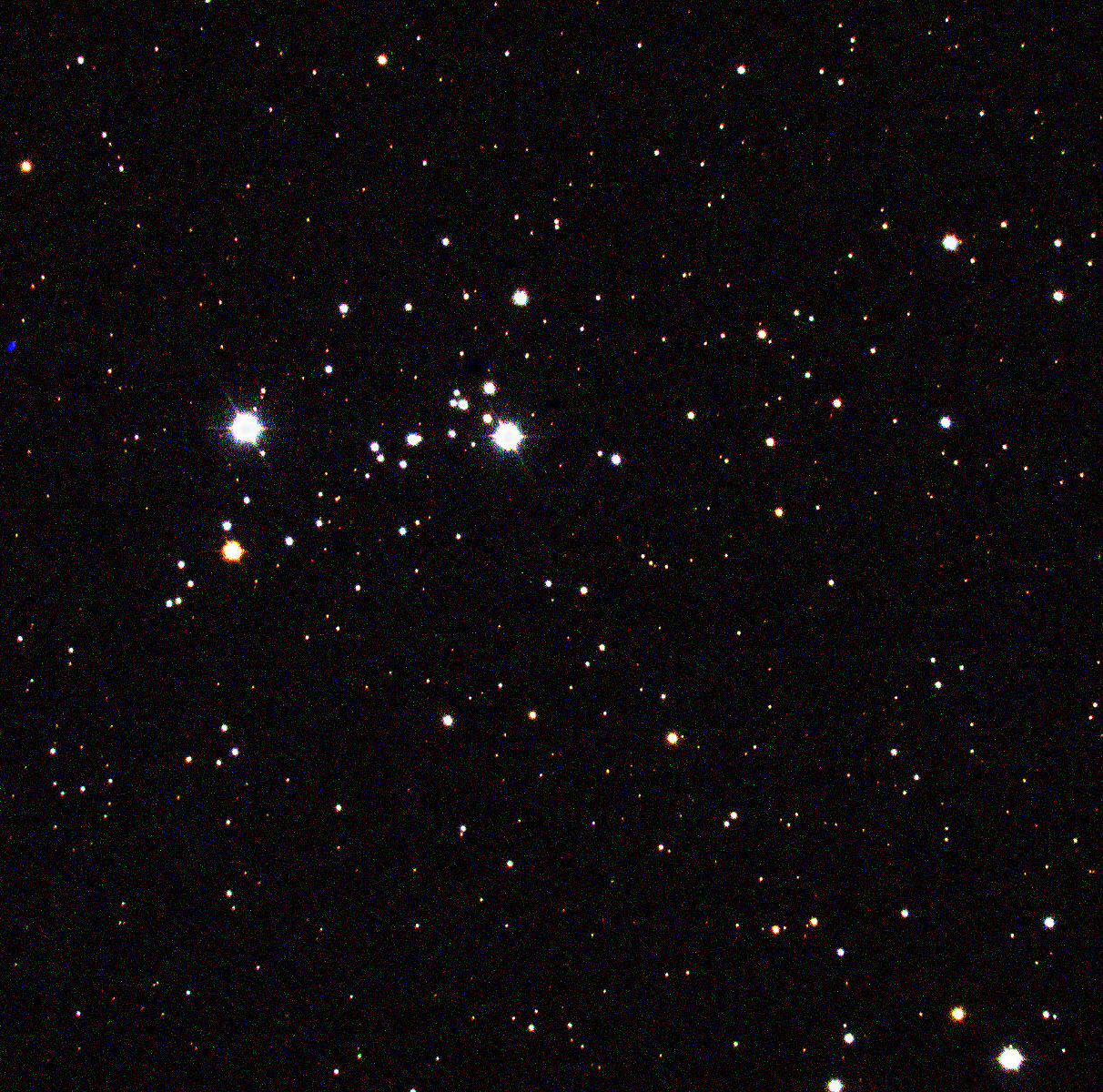
False colour image taken by the authors with the ALFOSC instrument of the Nordic Optical Telescope of the La Palma Observatory (NOT/ALFOSC)
Alicante 2
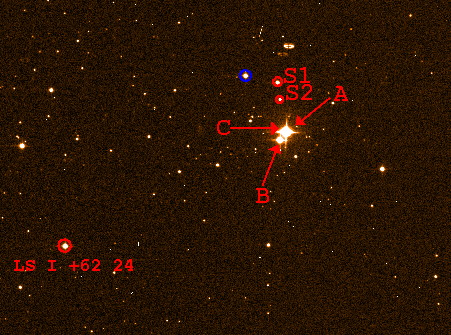
Image taken in the filter and with the BUSCA instrument in the 2.2 m telescope in the Calar Alto Observatory
Alicante 5
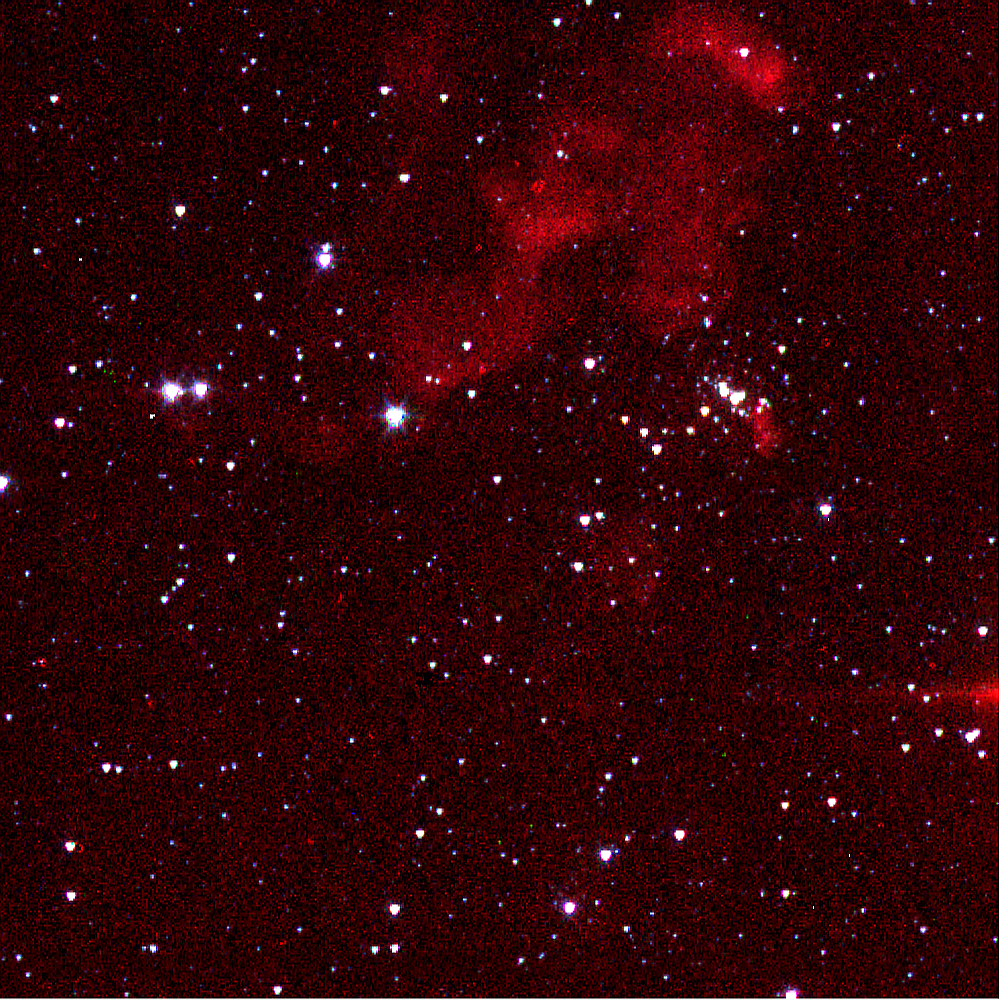
Open cluster Alicante 5, composition with false colors and inflatable
This image, which was obtained with the space telescope NTT (La Silla Observatory,Chile) in the visible range.
The composite image with false colours was obtained with the space telescope Spitzer, shows that the visible stars are part of a much larger population of extremely young stars, which is beginning to emerge from the cloud in which it has formed.
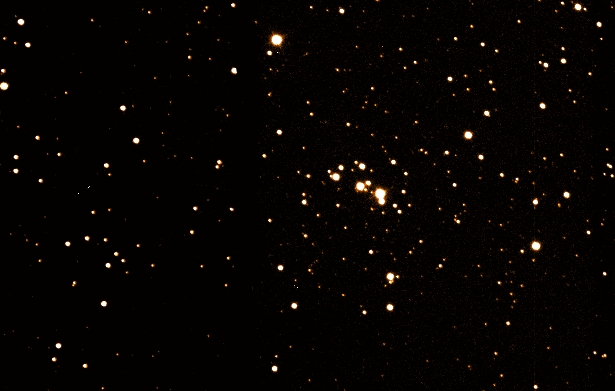
Open cluster Alicante 5
Alicante 6
This image, which was obtained with the space telescope Spitzer, shows in the mid-infrared a bubble of interstellar dust known as N37. Inside this bubble, there is an extremely young cluster, Alicante 6, which has not yet fully emerged from the cloud.
Our recent work shows that star formation in this area has probably been induced by a very luminous star, spectral type O7 II, which is in the lower right corner of the image (being a very hot star it is hardly seen in the infrared).
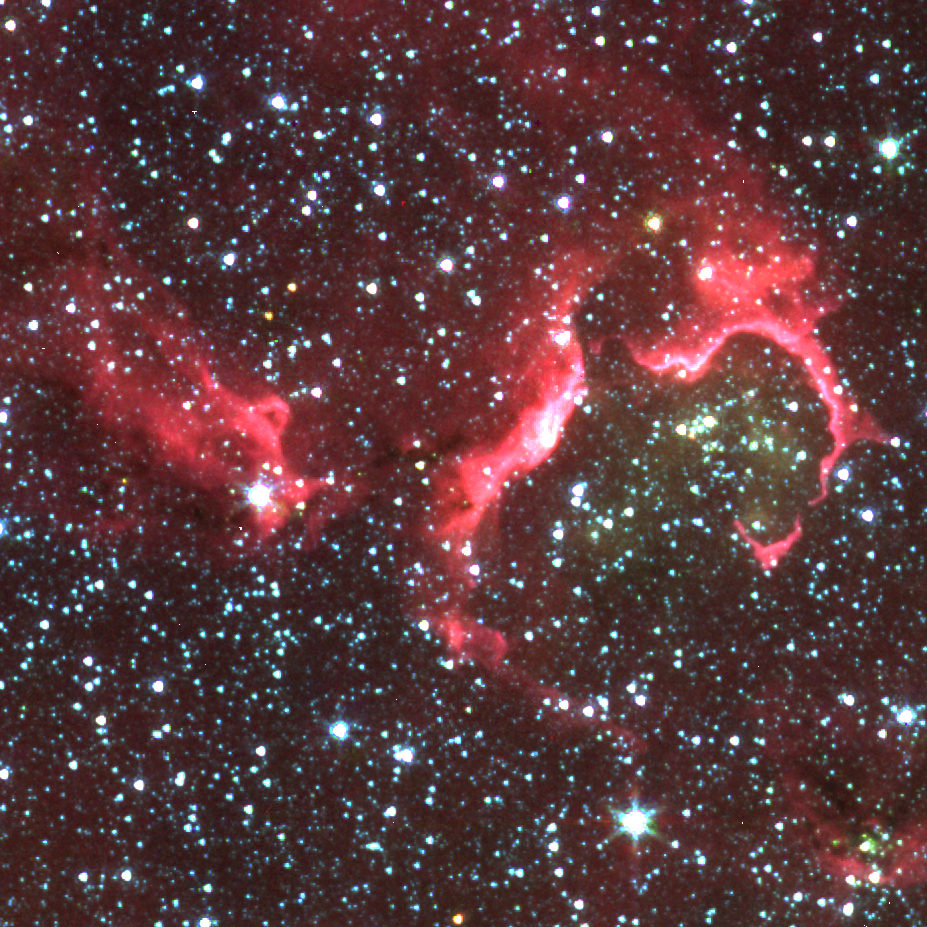
Cluster Alicante 6, young, Fake colour composition of three images
Alicante 7, 8, 9, 10
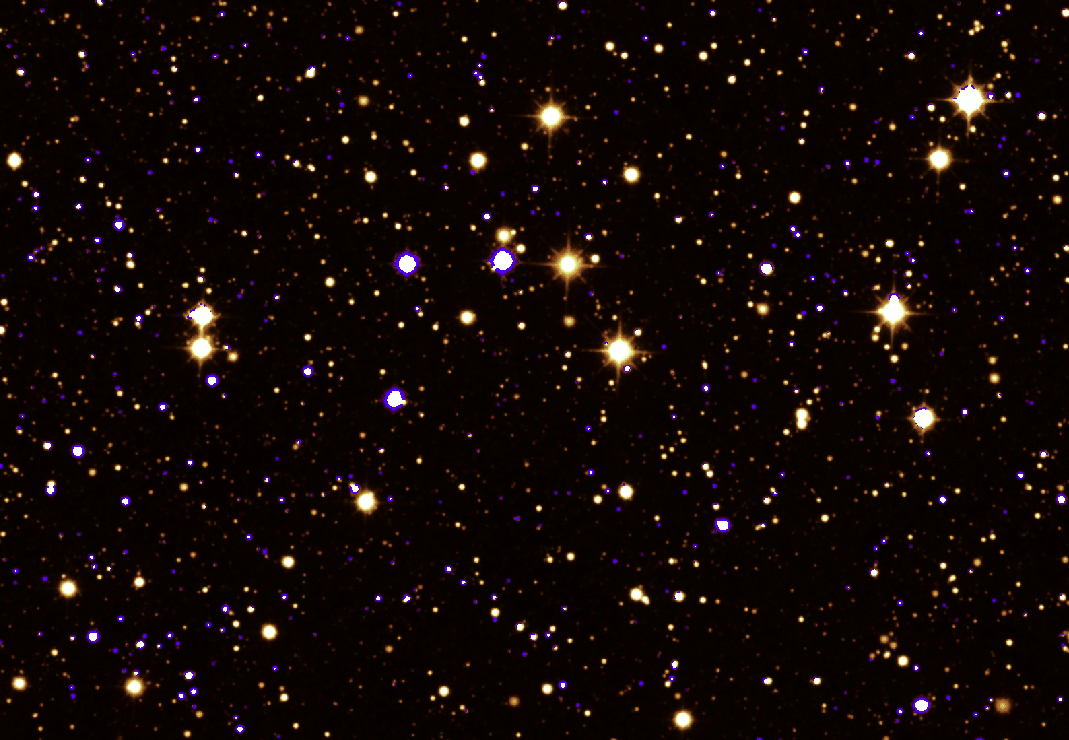
Alicante 8,composition in 3 bands taken in the near infrared and corresponding to the UKIDSS data catalogue
These clusters are in the group of the most massive clusters in our Galaxy (they have a stellar content of more than 10,000 Solar Masses). They are located at a distance of 6 kpc and are grouped in the area of intersection of the bar with the spiral arm called Scutum-Crux. They are very far away and in a very high extinction zone, so we can only detect and study their brightest members which are the red supergiants. These objects emit most of their radiation in the infrared, so they must be observed with detectors that capture light in this wavelength range. If we try to observe them in the visible range nothing is captured, as if they did not exist.
Some articles on these clusters in the journal Astronomy and Astrophysics:
- I. Negueruela, C. González-Fernández , A. Marco, J. S. Clark, and S. Martínez-Núñez. 2010. A&A, 513, A74
- I. Negueruela, C. González-Fernández , A. Marco, J. S. Clark. 2011. A&A, 528, A59
- I. Negueruela, A. Marco, C. González-Fernández, F. Jiménez-Esteban, J. S. Clark, M. Garcia & E.Solano. 2012. A&A. 547, A15
- C. González-Fernández & I. Negueruela. 2012. A&A, 539, A100
Alicante 11, 12
These clusters are published in the journal The Monthly Notices of the Royal Astronomical Society:
This work is framed within the investigations of Galactic Structure and Star Formation. We were studying a star formation region containing the open cluster called Stock 8 to investigate the extent of the Auriga OB2 star association and the possible star formation mechanisms existing in the area. As a result of the work, the Stock8 cluster has been discarded, placing it much closer to 2.8 kpc in the Perseus arm. In the region of Stock8 we have found two new clusters that are at the same distance as this one, which are Alicante 11 and Alicante 12.

Image taken in Aladin from the WISE Medium Infrared catalogue. The blue dots correspond to the stars in the Stock8 cluster and the yellow and green dots to the Alicante 11 and Alicante 12 clusters.